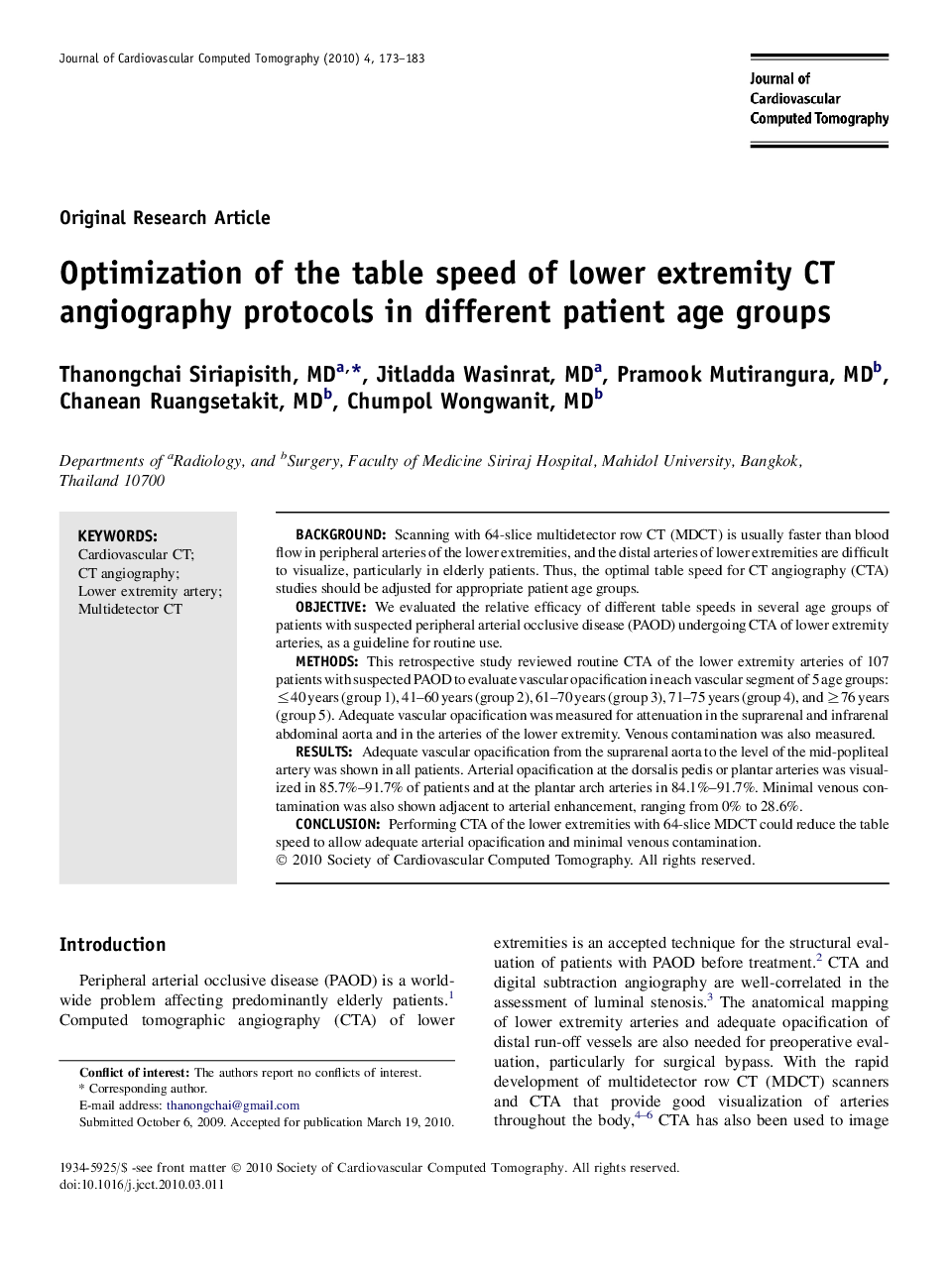| Article ID | Journal | Published Year | Pages | File Type |
|---|---|---|---|---|
| 2964823 | Journal of Cardiovascular Computed Tomography | 2010 | 11 Pages |
BackgroundScanning with 64-slice multidetector row CT (MDCT) is usually faster than blood flow in peripheral arteries of the lower extremities, and the distal arteries of lower extremities are difficult to visualize, particularly in elderly patients. Thus, the optimal table speed for CT angiography (CTA) studies should be adjusted for appropriate patient age groups.ObjectiveWe evaluated the relative efficacy of different table speeds in several age groups of patients with suspected peripheral arterial occlusive disease (PAOD) undergoing CTA of lower extremity arteries, as a guideline for routine use.MethodsThis retrospective study reviewed routine CTA of the lower extremity arteries of 107 patients with suspected PAOD to evaluate vascular opacification in each vascular segment of 5 age groups: ≤40 years (group 1), 41–60 years (group 2), 61–70 years (group 3), 71–75 years (group 4), and ≥76 years (group 5). Adequate vascular opacification was measured for attenuation in the suprarenal and infrarenal abdominal aorta and in the arteries of the lower extremity. Venous contamination was also measured.ResultsAdequate vascular opacification from the suprarenal aorta to the level of the mid-popliteal artery was shown in all patients. Arterial opacification at the dorsalis pedis or plantar arteries was visualized in 85.7%–91.7% of patients and at the plantar arch arteries in 84.1%–91.7%. Minimal venous contamination was also shown adjacent to arterial enhancement, ranging from 0% to 28.6%.ConclusionPerforming CTA of the lower extremities with 64-slice MDCT could reduce the table speed to allow adequate arterial opacification and minimal venous contamination.
